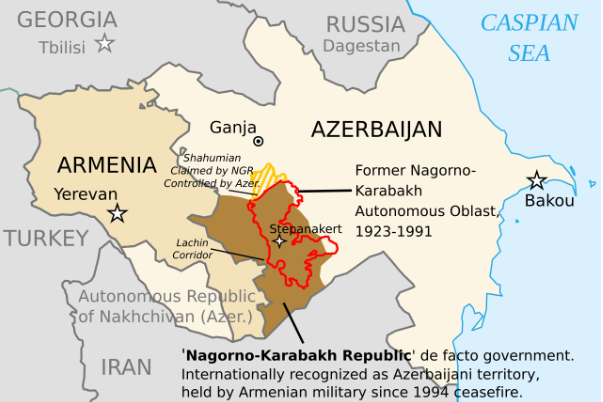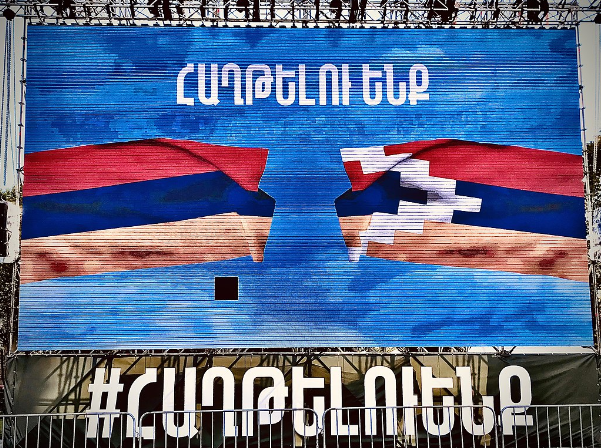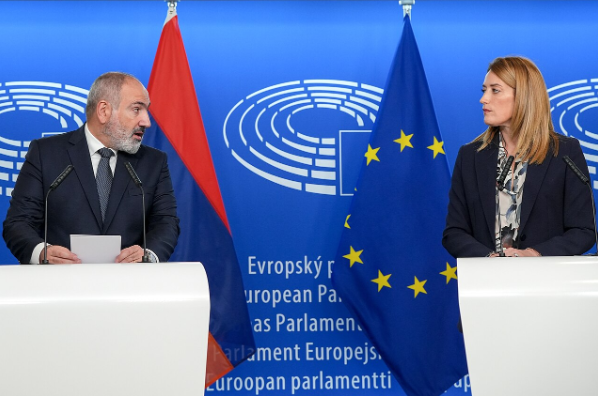From Russia to Europe: The New Armenian Diplomatic Landscape
Read: 6 minutes, 26 seconds
Armenia has recently improved its diplomatic ties with the European Union, getting closer to the EU's positions in the sphere of world politics. This fact may be seen as surprising, since Armenia has been historically a country under strong Russian influence. For example, Armenia still today is a member of the Collective Security Treaty Organization (CSTO), a sort of alliance led by Russia. In addition, Armenia has especially in the past relied on Russian protection and help to contrast external threats. This has occurred to the extent that Armenia has permitted Russian military infrastructures and soldiers to be stationed on its territory. Nevertheless, since the Velvet Revolution of 2018, which ousted pro-Moscow forces from the Armenian government, the country has slowly started a process of “cleansing” from Russian influence. The political consequence of this was Armenia’s progressive alignment with other powers usually considered rivals of the Russian Federation, such as the EU and the US. This article intends to explore the motivations behind this switch of allies by Armenia and what this has entailed until now.
Before starting, to fully understand the topic at hand some background knowledge needs to be provided in relation to the most important event which has characterized Armenia’s history in the last 50 years: the war in Nagorno-Karabakh with its neighboring country, Azerbaijan. The conflict began in the 1980s when both Armenia and Azerbaijan were still part of the Soviet Union. Indeed, in those years the region of Nagorno-Karabakh, which was considered a part of the Republic of Azerbaijan within the Soviet Union, had declared its independence from the Republic of Azerbaijan. This declaration occurred due to ethnic differences, as Nagorno-Karabakh was a region with an Armenian majority that sought to join Armenia. Thus, bringing on one hand the Republic of Armenia to support the declaration of independence, and bringing on the other hand the Republic of Azerbaijan to try to suppress this rebellion. Nevertheless, the real conflict began just after the collapse of the Soviet Union in the 1990s; since after Azerbaijan and Armenia claimed their independence from the USSR, a full-scale war over the region of Nagorno-Karabakh was declared.
The first war of Nagorno-Karabakh was won by Armenia with a peace deal brokered by Russia in 1994. Following this peace deal, Nagorno-Karabakh would have continued to be considered an integral part of Azerbaijan despite Armenia’s victory, keeping its status as a recognized Azerbaijani territory; though at the same time becoming an effective separatist and autonomous region controlled by ethnic Armenians. Through the brokering of this peace deal, Russia had extended its own influence over Armenia, becoming its main ally. Consequently, making Russia the only country in the region which could avoid the beginning of a new conflict with Azerbaijan, keeping political stability.
The situation after the ceasefire of 1994. Author: Bourrichon; created on 24 July December 2010 and uploaded on 9 December 2010; retrieved on 9 November 2024; no change made. https://en.wikipedia.org/wiki/Nagorno-Karabakh_conflict#/media/File:AZ-qa-location-en.svg
Afterwards, the first changes emerged in the context of the already mentioned Velvet Revolution of 2018, with the election of the new anti-Russian Prime Minister Nikol Pashynian. Pashynian, since was elected, expressed the need for Armenia to get rid of Russian influence, defining the use of Russia as protector from external threats as a “strategic error”. His point would be proven by the start of the second war of Nagorno-Karabakh in 2020, in which Azerbaijan began a full-scale offensive to retake control over the region. During this offensive, Russian forces demonstrated limited commitment to defending their Armenian allies, indicating that Russia could no longer be regarded as a reliable protector of Armenia. Due to the lack of Russian intervention, the war ended with an Armenian defeat as Azerbaijani forces took control over most of Nagorno-Karabakh.
After the war, the only territory left connecting Armenia with the part of Nagorno-Karabakh which was still under Armenian control, was the corridor of Lachin. This corridor was at last seized by Azerbaijani forces in December 2022 who besieged the remaining Armenians, denying supplies from the State. At last, on 19 September 2023, the Azerbaijani forces launched a final attack on the remnants of the Armenian controlled territories in the region, with the fights lasting just for two days. These events further diminished Armenia’s trust in Russia, as the Russian peacekeeping forces stationed in the besieged Armenian territories since 2020 did not intervene to prevent the final Azerbaijani Invasion. The aftermath of this conflict provided Azerbaijan with total control over Nagorno-Karabakh, causing more than 100.000 Armenians to flee from the region, fearing possible repercussions by the Azerbaijani forces on the local population.
A pro-military board in Yerevan on 7 October 2020; Author: Garik Avakian; created on 7 October 2020 and uploaded on 12 October 2020; retrieved 9 november 2024; No change made. https://en.wikipedia.org/wiki/Second_Nagorno-Karabakh_War#/media/File:Broadcasting_events_of_the_frontline._Republic_Square,_Yerevan,_Armenia.jpg
The complete loss of Nagorno-Karabakh was the final proof needed by Armenians to finally be sure of the unreliability of Russia as an ally. This compelled the Armenian government to re-evaluate its diplomatic strategy and redefine which countries should be considered allies and which as adversaries. Furthermore, this need of change in international relations is especially demanded by still present tensions between Azerbaijan and Armenia. In fact, Azerbaijan may be willing to connect its country with its exclave of Nakhchivan, separated from Azerbaijan by the Southernmost territories of Armenia, meaning that future conflicts between the two countries may arise again. Moreover, some declarations made by the president of Azerbaijan Ilham Alyiev, who already in the past defined Armenia as merely being “Western Azerbaijan”, further support this possible scenario.
In recent years, the Armenian government has made significant efforts to identify trustworthy allies, resulting in joint training exercises with the US military and to buy weapons from France and India. Above all, the most notable of Armenia's new diplomatic ties is its emerging partnership with the European Union. In fact, the Armenian minister of foreign affairs declared that Armenia would seek membership in the EU. Indeed, the idea of such possible accession has been even considered by the European Parliament. Particularly, because recently Armenia has improved considerably its political rights and freedoms, to further align itself with European values.
In addition, the EU, in response to Armenia’s commitment to join the organization, has recently declared its Economic support to the country. For example, in April 2024, the president of the Commission, Ursula Von der Leyen, pledged a total of 270 million euros destined to Armenia, symbolizing the new partnership between the two. Next to this, the EU has promised further help: firstly, to develop Armenian infrastructures with new projects to improve sources of production for renewable energy; secondly, with the recent initiation of negotiations for a process of VISA liberalization; lastly, the EU promised further economic support to take care of the Armenian refugees who fled from Nagorno-Karabakh years before.
The president of Armenia Nikol Pashinyan and the President of the European Parliament Roberta Metsola meeting in Brussels on 20 October 2023. Author: European Parliament; Picture created and uploaded on 20 October 2023; retrieved on 9 November 2024; no change made. https://www.flickr.com/photos/36612355@N08/53271694459/
While Armenia's future may appear secure due to the recent international support it has received, particularly from the EU, the path to EU accession is likely to be complex. Russia maintains significant strategic interests in Armenia, given its location as a crossroads between Asia and the Middle East. Thus, providing the possibility of Russia preventing Armenia from strengthening its ties with the EU. The past examples of Georgia and Ukraine demonstrate that this is not an unlikely possibility.
In conclusion, while Armenia’s future may appear brighter than before, it still faces numerous challenges that must be tackled. This situation contributes to a significant level of uncertainty, especially in a world where conflicts and political instability are increasingly prevalent.


